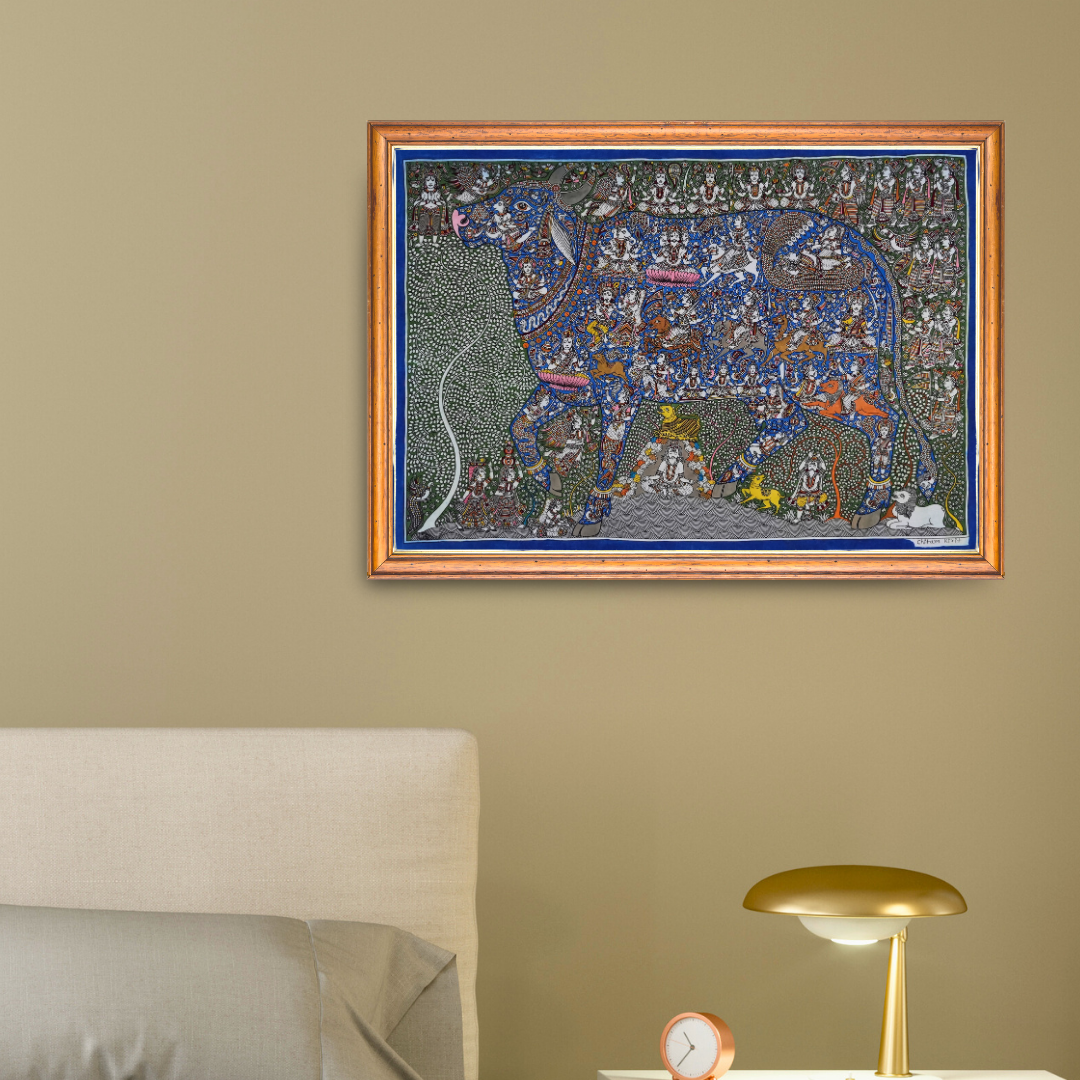Your Cart
Shop Mata Ni Pachedi Handmade Paintings Online
Discover Mata Ni Pachedi Art Painting at Rooftop
For more than 400 years, families in Gujarat have turned plain cloth into shrines. These sacred textiles, known as Mata Ni Pachedi paintings, gave communities a temple wherever they gathered. When the fabric was stretched behind the goddess, the place itself became holy… even if there were no stone walls or sanctum.
At Rooftop, you’ll find authentic Mata Ni Pachedi paintings still created by the families who have carried this tradition for generations.
The Story Behind the Cloth
The name “Mata Ni Pachedi” means “behind the mother goddess.” It tells you what the painting was for: a backdrop for the goddess, transforming a space into a temple.
The tradition is rooted in the Vaghari or Devi Pujak community, who were once denied entry into formal temples. Instead of being excluded, they carried their own. By painting goddesses on cloth, they created portable shrines that could be unfolded in a courtyard, under the sky, or in a village square.
For them, the goddess lived in pigment and fabric. Wherever the cloth was placed, the temple stood.
How a Mata Ni Pachedi Is Made
Creating a Mata Ni Pachedi painting is as much a ritual as it is art. The process has been preserved within families for centuries.
- Tools: bamboo brushes, chewed soft at the tip, and carved wooden blocks for repeated motifs.
- Palette: black made from fermented iron rust and jaggery, red from alizarin, white left as open cloth.
- Process: cloth washed and treated with harde powder, dyed, painted, and fixed step by step.
Each stage is deliberate. Once complete, the fabric is no longer ordinary cloth. It becomes a vessel for the goddess.
Symbols and Stories
Every Mata Ni Pachedi reads like a scripture in paint. At the centre sits the goddess, enthroned within a shrine of arches and pillars. Around her, stories unfold.
The attendants are priests, musicians, animals, and worshippers. The surrounding panels show rituals, myths, and festivals. The goddess is always the anchor, commanding both presence and protection.
The cloth is not a static design. It is a drama, a performance, a stage where faith is painted scene by scene.
From Shrine to Gallery
For centuries, Mata Ni Pachedi belonged only to ritual. In recent decades, artists began creating smaller panels and framed versions that could live in homes and galleries. Families like the Chitaras of Ahmedabad have carried the form into the present, winning recognition in India and abroad.
In 2023, Mata Ni Pachedi received a Geographical Indication (GI) tag. For artists, it brought dignity and protection. For collectors, it is a mark of authenticity.
Today, Rooftop brings these works directly from the makers. Each piece is a continuation of a sacred heritage that once gave temples to those without temples.




